ERES 2011
8th International Conference on Earthquake Resistant Engineering Structures
7 - 9 September 2011
Chianciano Terme, Italy
Overview
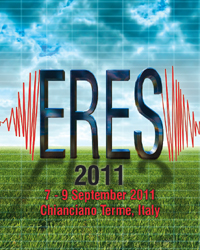 The Eighth International Conference on Earthquake Resistant Engineering Structures (ERES 2011) recently took place in Tuscany, organised by the University of Catania represented by Professor Michele Maugeri and the Wessex Institute of Technology (WIT) represented by Professor Carlos A Brebbia.
The Eighth International Conference on Earthquake Resistant Engineering Structures (ERES 2011) recently took place in Tuscany, organised by the University of Catania represented by Professor Michele Maugeri and the Wessex Institute of Technology (WIT) represented by Professor Carlos A Brebbia.
The meeting has been held every two years since the first conference started in Thessaloniki, organized by WIT and the School of Engineering of Aristotle University. The meeting has been reconvened in a series of outstanding locations, such as Tuscany, a region rich in the type of cultural architectural heritage that needs to be protected against earthquakes.
The problem of protecting the built environment in earthquake-prone regions involves not only the optimal design and construction of new facilities, but also the upgrading and rehabilitation of existing structures including heritage buildings. The type of highly specialized retrofitting employed to protect Tuscany’s heritage, as well as other regions of the world, is an important area of research and appropriate to the conference objective of designing better earthquake resistant buildings.
Major earthquakes and associated effects such as tsunamis continue to stress the need to carry out more research on the topics of this conference. The problems will intensify as population pressure results in buildings in regions of high seismic vulnerability. A better understanding of these phenomena is required to design earthquake resistant structures.
The conference addressed these problems and continued to expand on the development of previous meetings in the series. Papers presented at ERES are an invaluable record of the state of the art on the topic. Furthermore, all those published from 1993 to 2009 are now freely available online at http://library.witpress.com where they are a permanent record demonstrating the quality of the research presented at the ERES conferences.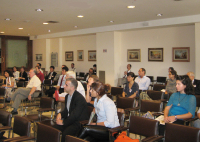 Professor Carlos Brebbia opened the conference by welcoming the delegates in the name of the Wessex Institute of Technology (WIT) and explained the motivation behind the meetings programme organized by the Institute. The main objective of WIT is helping to disseminate advanced engineering technologies and promote their applications in practical problems. As a result of this, WIT works in partnership with many institutions around the world, in terms of research, training, publications and advanced consulting.
Professor Carlos Brebbia opened the conference by welcoming the delegates in the name of the Wessex Institute of Technology (WIT) and explained the motivation behind the meetings programme organized by the Institute. The main objective of WIT is helping to disseminate advanced engineering technologies and promote their applications in practical problems. As a result of this, WIT works in partnership with many institutions around the world, in terms of research, training, publications and advanced consulting.
WIT has long and well established links with senior academics at the University of Catania in the field of environmental engineering, water resources and earthquakes engineering. In the case of ERES VIII, Profsesor Brebbia is grateful for the support of Michele Maugeri, Co-Chairman of the meeting and Co-Editor of the conference book.
Keynote Addresses
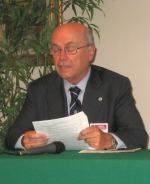
The second keynote address was entitled “Site effects and site amplification due to the 2009 Abruzzo earthquake” by Paula Monaco, from the University of L’Aquila. Her paper presented a description of the problems found in L’Aquila and proposed a new insulation system for the seismic retrofitting of historical buildings based on individual platforms.
Invited Presentations
Other invited presentations were:
“Safety evaluation for dams against different modes of surface faults induced by earthquakes”
by Y. Ariga, Hiorsaki Univeristy, Japan
“Features, recent application and conditions for the correct use of seismic isolation systems”
by A. Martelli, University of Ferrara, Italy
“Adaptable dual control systems for earthquake resistance”
by M. C. Phocas, University of Cyprus
“Nonlinear vibrations of piles in viscoelastic foundations”
by A. E. Kampitsis, National Technical University of Athens, Greece
“Evaluation of response characteristics of buried pipelines during earthquakes”
by K. Fuchida, Kumamoto National College of Technology, Japan
Special Session on the Vulnerability of Heritage Sites and Buildings
The conference included a special session on the vulnerability of heritage sites and buildings which opened with an interested presentation on Machu Pichu.
“Vulnerability of Machu Pichu citadel 100 years after its scientific discovery”
by Carlos Cuadra, Akita Prefectural University, Japan
The other papers in the same session were;
“Classification of cultural heritage assets and seismic damage variables for the identification of performance levels”
by Serena Cattari, University of Genova, Italy
“Structural performance evaluation of historical landmark (Yokufu-en) built in the Taisho period”
by Shigeto Nagashima, NTT Facilities Inc. Japan
“A study of site characteristics affecting seismic strengthening strategy”
by G. C. Yao, National Cheng Kung University, Taiwan
“Natural frequencies of the colonnades of the Parthenon Athens at micro tremor level”
by Mariko Ohmura, Mie University, Japan.
Conference Topics
The rest of the papers were grouped under the following topics
- The 2009 Abruzzo Earthquake
- Seismic isolation and energy dissipation
- Ground motion
- Soil structure interaction
- Structural performance
Invited Presentation by Professor C Cuadra
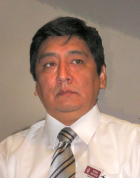
Another invited presentation by Professor C Cuadra related to the effects of the East Japan (Sendai) earthquake and tsunami whose epicentre was offshore. The paper described the wave height which reached 30m in some locations. The most important information is the inundation height, which was recorded of up to 13m, from the point of view of the structural effects, which were more severe for wooden houses and even for steel-framed buildings where the inundation height reached the second floor. The best behaviour was observed for reinforced concrete structures, which withstood deep inundation height, up to four floors high although some of them were overturned.
International Scientific Advisory Committee
The International Scientific Advisory Committee met to discuss ways in which the conference can be improved in 2013. The general feeling was that more emphasis ought to be put on seismological aspects, as well as earthquake prediction. One important topic is socio-economic issues, including those dealing with insurance risk. The committee also discussed possible locations for the next meeting.
Conference Dinner
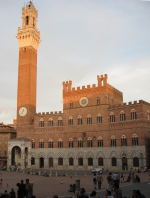 During the evening of the second day, the delegates were taken to Siena where they had occasion to see some of the sights before being offered dinner. Siena is one of the most beautiful cities in Italy and is renowned throughout the world for its University (founded in 1240) as well as being the site of the oldest bank in the world. One of its major attractions is the shell-shaped town square, Piazza del Campo, where the horse race called Il Palio takes place between different contradas (wards). Surrounding the Piazza are some outstanding buildings, including the Palazzo Publico and the Mangia tower among others. Nearby is the renowned Duomo, started in the 12th century, and Palazzo Salimbeni. The streets of old Siena surrounding the Piazza are delightful and reminders of the medieval times when Siena was a prosperous city state.
During the evening of the second day, the delegates were taken to Siena where they had occasion to see some of the sights before being offered dinner. Siena is one of the most beautiful cities in Italy and is renowned throughout the world for its University (founded in 1240) as well as being the site of the oldest bank in the world. One of its major attractions is the shell-shaped town square, Piazza del Campo, where the horse race called Il Palio takes place between different contradas (wards). Surrounding the Piazza are some outstanding buildings, including the Palazzo Publico and the Mangia tower among others. Nearby is the renowned Duomo, started in the 12th century, and Palazzo Salimbeni. The streets of old Siena surrounding the Piazza are delightful and reminders of the medieval times when Siena was a prosperous city state.
The delegates had occasion to walk around the Piazza and its surrounding area before proceeding to dinner in a nearby Trattoria offering typical Sienese dishes, accompanied by the Chianti wine for which the region is widely renowned.
Closing of the Conference
The conference ended with a panel discussion chaired by Professor Maugeri, during which some the topics presented during the meeting were discussed, with particular reference to the L’Aquila earthquake and the Sendai tsunami in Japan.
Professor Michele Maugeri closed the conference with some general remarks regarding the importance of probabilistic analysis in earthquake engineering for earthquake prediction. The determination analysis can lead to dangerous underestimations in many cases. The main problem is that we need to have a sufficient number of records to make sense in the case of probabilistic analysis. In the area of the L’Aquila earthquake, the predicted soil amplification was 0.44 versus the recorded 0.65 value. Similar considerations apply for the recent earthquake in Japan, and the problem originates in the assumption of soil heterogeneity which is not realistic for most locations.
Professor Maugeri also discussed the need to introduce ductility into the earthquake structural engineering calculations. It is not sufficient to set displacement limits that do not take into account ductility. The main difficulty is how to calculate these effects, which implies a better understanding of the soil behaviour.
Professor Maugeri thought that more emphasis ought to be put into performance-related design which could be the main topic of the forthcoming ERES 2013 conference.
Publication of Papers
The proceedings of Earthquake Resistant Engineering Structures VIII, 352pp (Print ISBN: 978-1-84564-548-9; Online ISSN: 1743-3509) are available in paper and digital format from WIT Press priced at £149/US$298/€209. Orders can be placed on the WIT Press web site at www.witpress.com or by email: This email address is being protected from spambots. You need JavaScript enabled to view it., telephone: +44 (0) 238 029 3223 or fax: +44 (0) 238 029 2853.
Papers from the conference will also be hosted online at the WIT eLibrary as Volume 120 of WIT Transactions on the Built Environment (Online ISSN: 1743-3509). For more details visit the WIT eLibrary at http://library.witpress.com


 Wessex Institute
Wessex Institute